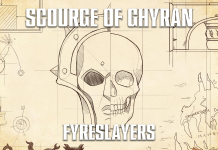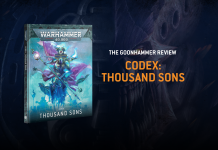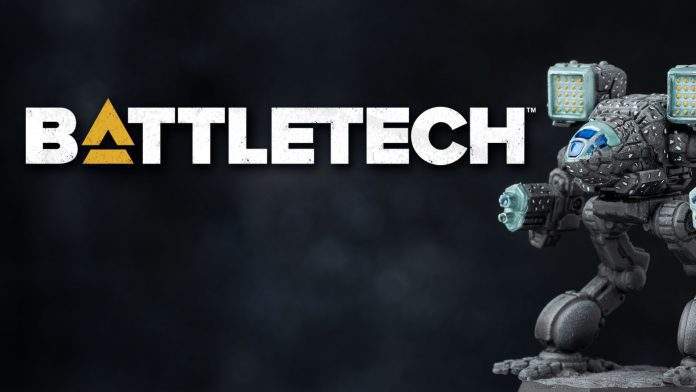The Templar has been one of my favorite mechs since I first saw it – playing Mechwarrior 4: Mercenaries some time between Christmas and New Year 2002. While it wasn’t the biggest mech, or the fastest, or the most durable, I liked how well it balanced everything. It also happens to look very cool. In tabletop land it does a lot of the same things as it did in the video game – it’s essentially an omni-battlemaster, using an XL engine to pick up a little more armor and few more guns. It’s often used as a command mech, with a couple variants that carry a C3 master computer.
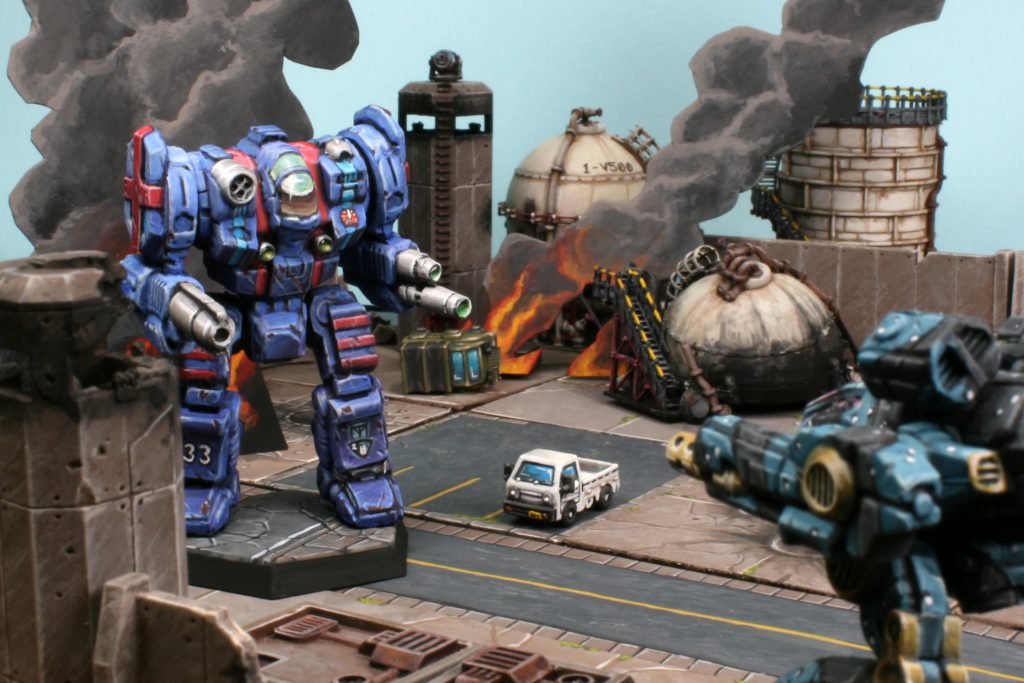
In later eras, the Federated Suns did their typical thing of skipping entirely over making a II version of the mech, and went straight for the Templar III. As it’s visually very similar, and the plastic mini was designed to be usable for either mech, we’re going to be covering it here as well.
Chassis
As an omnimech, all the Templars are going to have the same basic configuration – moving 4/6, running an XL engine, and carrying a full load of 263 pips of standard armor. 13 heat sinks live in the engine, meaning every variant can sink at least 26 heat, CASE is fixed in the right torso, and it carries 40 tons of weapons and equipment across 30 crit slots. The arms, usefully, lack lower arm or hand actuators, so a substantial chunk of firepower can flip to cover the rear as needed.
Variants
These mechs have all been reviewed based on a standard F through S scale, which you can find described on our landing page here (along with all of our other ‘mech reviews, the name of the box you can buy to get any of the mechs we have covered, and our general methodology).

TLR1-O
A bit of a do-it-all variant, the base model here runs a gauss rifle, medium and large pulse laser, pair of ER medium lasers, and a streak SRM 4. It backs up those weapons with a targeting computer, so it’s reasonably effective at doing anything. The gauss engages at long range, and the pulses can hit anything small that gets too close. Broadly, it wants to get to three hexes, which is the best balance of being at short range on everything but the medium pulse. Assuming the streaks fire, it only builds movement heat, which is perhaps a little oversinked, but not so much that you’re carrying heat sinks that should be weapons. The only real problem it has is that the SRM ammo can take out the entire mech if it explodes, but it’s in a well padded location. At 2,045 BV I see this as incredibly well priced – it’s not necessarily going to stand out at doing any single thing, but mechs like this do very well filling out a force.
Jack’s Rating: A
TLR1-OA
While the stock variant carries a mix of weapons, the OA is mostly about doing 10 damage hits. One arm carries an ER PPC, the other an ultra AC/10 and streak SRM 6, and it’s still carrying the targeting computer. Four jump jets give it some extra mobility, though without pulses you want to be careful using them and still expecting to hit your target. It’s still oversinked, only generating 1 heat at a run assuming the streaks fire, while the right torso is now much more dangerous to get crit – it has three crits of engine and four of ammo. It’s just barely more expensive than the prime variant at 2,070 BV, and I’d say it’s a touch worse – it can’t headcap, and is at much higher risk of ammo explosion. Still a pretty solid mech with three accurate 10 damage hits and the streak 6 for crit seeking.
Jack’s Rating: B+
TRL1-OB
Instead of pairing an ER PPC with a big autocannon, this throws three rotary AC/2s on the other arm, packs two ER medium lasers into the center torso, and drops the targeting computer. Rotary AC/2s are not good – they’re overpriced and prone to jamming if you want to fire all six shots. It’s down to 1,806 BV, but has much lower damage output than I want for that cost.
Jack’s Rating: C-
TLR1-OC
Another variant with an ER PPC and jump jets, this one goes absolutely crazy with the rest of the loadout, carrying an LB 20-X AC, five medium pulses, and an ER medium laser. The targeting computer was unfortunately sacrificed to fit that giant autocannon, but it’s still a great brawler. The size of the autocannon does mean it stretches from the arm into the torso, removing the ability to flip arms, but as long as you keep targets in front of you it does a lot of damage. The ER medium laser feels superfluous to me – you’re exactly neutral at a run with the autocannon and pulses, and it doesn’t have the range to be contributing with the ER PPC, so it’ll mostly be hanging out unused (or thrown in if you’re walking at it only takes you to +4). I think I’d rather see that ton spent on ECM even if it’ll generally end up useless. 2,063 BV is a steal for this as long as you don’t play on planet bowling ball.
Jack’s Rating: A
TLR1-OD
This is the Mechwarrior 4: Mercenaries variant, running a pair of large x-pulse lasers and a pair of light gauss rifles. The loadout doesn’t hold up as well on tabletop as it did in the video game, with the pulses and light gauss pushing up to 32 heat at a run, only sinking 26. As most of the heat comes from the pulses (14 each), there isn’t a good option to drop to balance out your heat load, it’s a constant cycle of spiking heat then dropping way off. 1,840 BV is one of the cheapest templars, but it’s definitely less effective than the variants 200 BV more.
Jack’s Rating: C
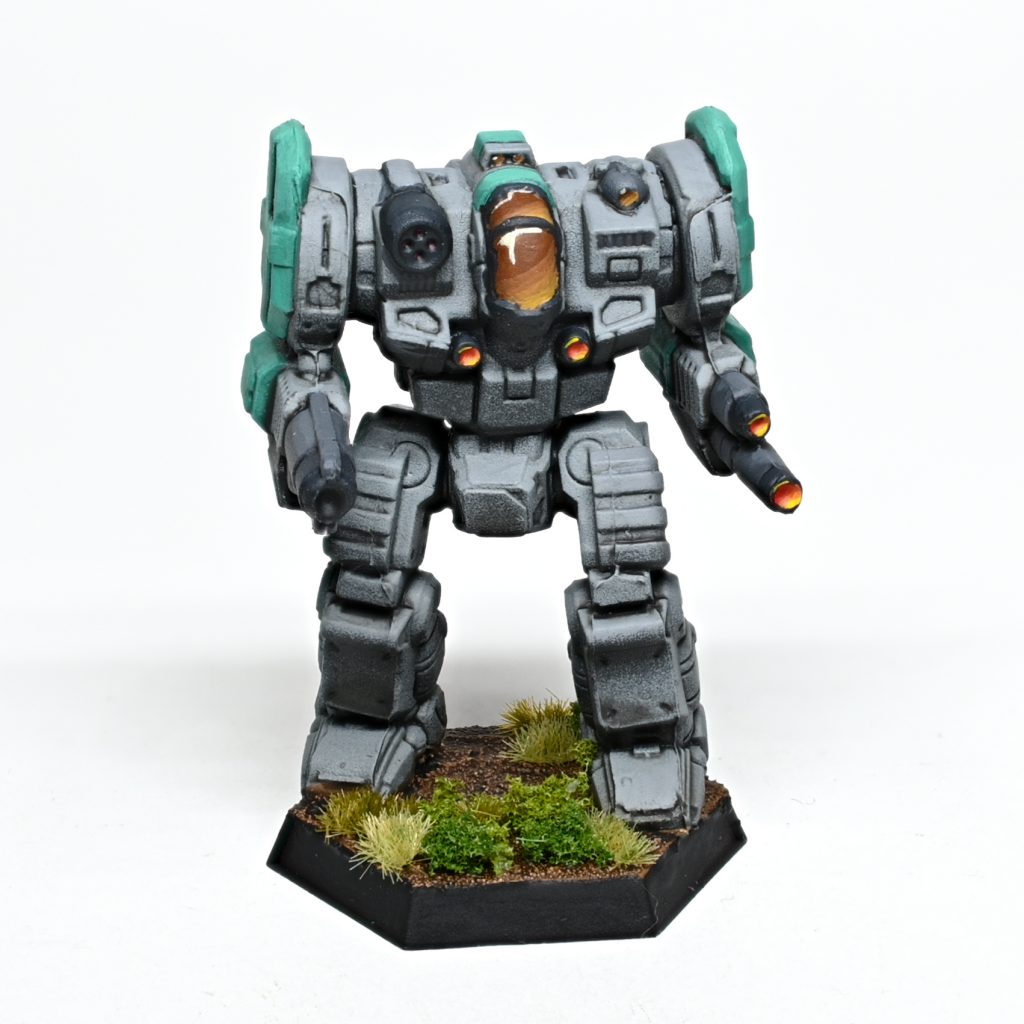
TLR1-OE
The first of the two C3 Master variants, this is designed to hang out at long range with a pair of Artemis IV LRM 15s, an ER PPC, two medium pulses, and an emotional support small laser. As a C3 unit, it’s well designed – the primary weapons all have 7 hex short ranges, which is conveniently 1 hex outside of ECM range. It needs some finesse to pull off, but at 1,865 BV this is good at doing the C3 job, though I wouldn’t otherwise take it. As a bonus, it carries its own ECM – generally this will be in ECCM mode to make it harder for hostile ECM to shut you down.
Jack’s Rating: B (in a C3 unit)
TLR1-OF
The second C3 Master variant, this one is designed more around closing in and spotting for other units. For weapons it’s carrying three medium pulses, an ER medium laser, heavy PPC, and light gauss rifle, and in addition to the C3 it picks up four jump jets for added mobility. Unfortunately for a mech that’ll generally be in close, it doesn’t have the ECM suite, and with short range on the heavy PPC being 6 hexes it can’t have a spotter dance around just outside ECM range. 2,029 BV takes it back up into the same range as the -O, -OA, and -OC, all of which are more effective if you aren’t making use of C3.
Jack’s Rating: C (in a C3 unit)
TLR1-OG
Definitively the cheapest Templar at only 1,632 BV, this is another long range plinker like the -OB, but instead of rotary AC/2s it has three LB 2-X ACs and a light gauss rifle. If you know you’re facing a bunch of VTOLs this is adequate. In any other situation these are not very good.
Jack’s Rating: D
TLR1-OH
This variant mostly exists because rolling big cluster tables is fun – it’s got a pair of MRM 30s, pair of light PPCs, and an ER flamer. The MRMs do have Apollo FCS (which removes their hit mod at the cost of taking a penalty to their cluster rolls), and it’s got a C3 slave so it can make use of a spotter to get inside the MRM short range, but it’s just not particularly effective. It’s also carrying a targeting computer to boost the pair of light PPCs, which feels to me like a waste. At 1,958 BV I can’t see a situation where I take this over other Templar variants.
Jack’s Rating: D
TLR1-OI
This is very purely a fire support mech – two heavy PPCs and a gauss rifle are the extent of the weaponry, and it’s carrying enough heat sinks to only build 1+movement heat. It’s just going to get in range and hammer away with 15 damage hits until something takes it out, and with the gauss rifle in the arm it’s not particularly vulnerable to an explosion taking out the entire mech. While not the cheapest mech to carry three headcappers at 2,202 BV, by my research I only see two that are cheaper – the Awesome AWS-11H, which only moves 3/5 (I’ll call standard engine on the Awesome and higher armor on the Templar a wash) and the Thug THG-13K, which doesn’t have anywhere remotely approaching the heat sinking to fire three heavy PPCs.
Jack’s Rating: A
TLR1-OR
-OR variants of Inner Sphere omnimechs are typically a clantech refit, and this is no exception (though for some reason it wasn’t created until 3134, which is strange as the Templar production lines were destroyed in 3069 and never restarted until Templar III production began in 3100. But, ignoring that inconsistency, the -OR carries a pair of clan ER PPCs, an LB 10-X AC, and five medium re-engineered lasers, along with 30 heat sink capacity. It’s also ignoring the fixed CASE in the torso in favor of CASE II in the arm with the LB-10X and ammo, a great call. This is a near optimal bracket firing mech – at long range the two ER PPCs only build movement heat, and at short range it switches to the five re-engineered lasers, which also only build movement heat. At either long or short range it can toss in the autocannon, which will take it to +4 heat at a run. Pretty perfect.
You do pay a lot more for this than other Templar variants, all the way up at 2,423 BV. I’m a little wary of spending that much on an assault mech with an Inner Sphere XL engine, but at least there aren’t any exploding components that’ll take the engine out, so it’s not a huge risk. By the time you lose a torso you’re generally pretty much out of the fight anyways.
Jack’s Rating: A
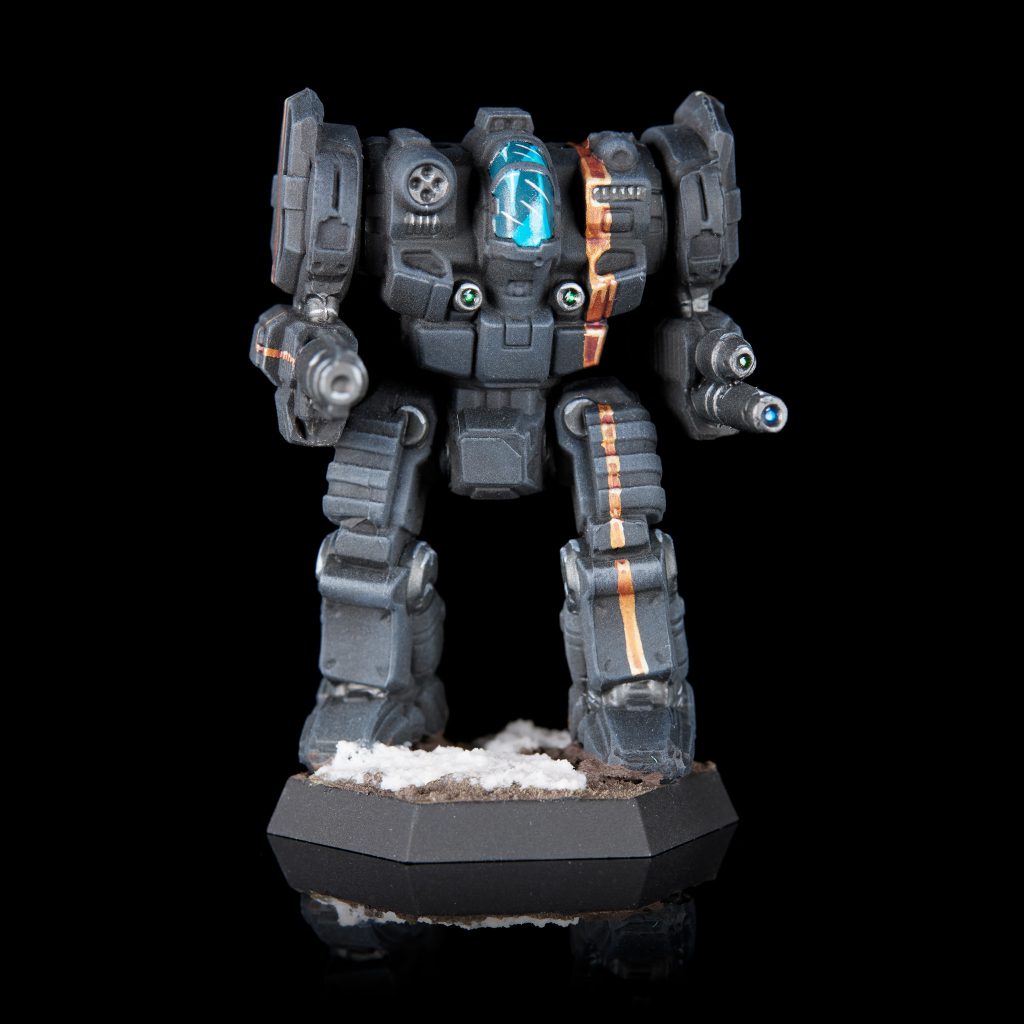
TLR1-OU
It goes underwater. You pay 1,747 BV for the privilege of making your miserable underwater game less miserable. Woo.
Jack’s Rating: Don’t play underwater games.
TLR1-OBLO
Another variant that stretches the credulity of timelines, the -OBLO is a -O that trades the SRM rack for improved C3 and an ECM suite. It goes up to 2,062 BV, so it’s a definite downgrade outside of a C3i setup – but in one all my thoughts on the -O apply here.
Jack’s Rating: A (in a C3i unit)
TLR1-O (Grayson)
Another relatively inexpensive variant at 1,868 BV, the Grayson variant mostly puts out high quantity five damage hits. It runs four ER medium lasers, two AC/5s (with four tons of ammo, so you can and should carry nothing but precision), and two streak SRM 4s. It keeps the targeting computer from the -O variant, so with precision this is pretty good at tagging light mechs for at least a bit of damage, but it also has the problem of five ammo bins in a single side torso with an XL engine, so it’s real vulnerable to getting blown up early.
Jack’s Rating: C-
TLR1-O (Tancred)
The Tancred variant does the same thing, but differently, and worse. Weapon loadout is a pair of rotary AC/5s, ER large laser, and three ER mediums – that’s definitely more five damage hits, but without the accuracy bonus of precision (the targeting computer is retained), and with the chance of jamming. The ER large laser replaces the SRMs, which I’d say is also a net loss – a single 8 damage hit isn’t particularly going to punch a hole anywhere, and I’d rather have a pile of extra 2 point hits. While it does the same problem of ammo bins, at least this will empty a bin every other turn. At 2,273 BV I don’t feel like this is doing anything I value for such a big chunk of most forces.
Jack’s Rating: D
Templar III
Skipping over a Templar II, the Templar III was created to replace the Templar after the original production lines were destroyed, and look a little more like the Mechwarrior 4 version. Broadly, it does the same job as the Templar, but approaches how to do it a little differently (and I think more interestingly and effectively).
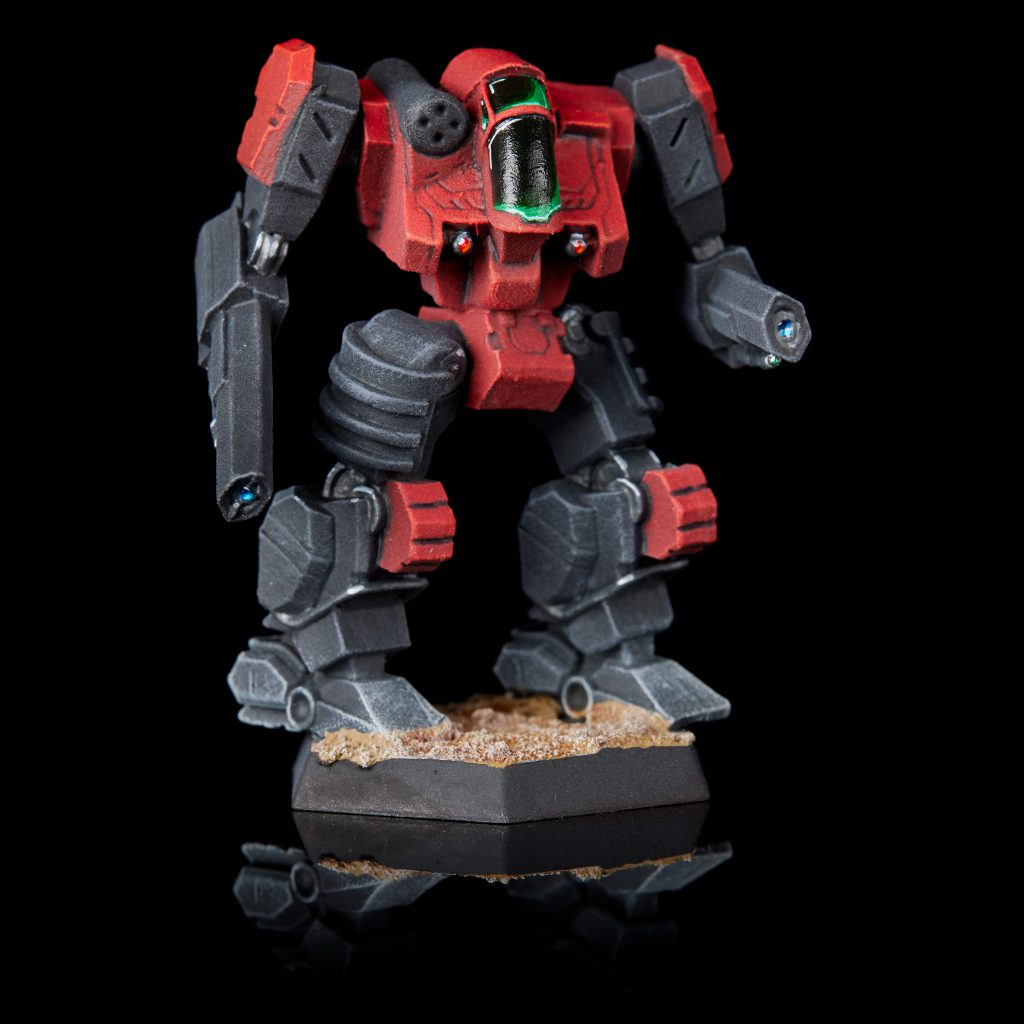
Chassis
It’s still an 85 ton omnimech, but this time is carrying a light engine instead of the XL and has a heavy duty gyro. Heavy duty gyros take the same four crit slots as a normal gyro but are destroyed after taking three crits instead of two – the first crit doesn’t force a piloting skill roll, but does add a +1 penalty. While this is interesting and does make it a substantially more durable mech than the Templar, every time I see a heavy duty gyro I question why it exists. On an 85 ton mech, the gyro weighs four tons. A heavy duty gyro instead weighs eight tons, and costs 42.5 BV over the standard gyro. Instead, you could armor the gyro, which takes two tons, only costs 8.5 BV, and means the first crit it takes does nothing (also not imposing the PSR penalty, and letting you keep absorbing additional crits in the other slots). This is one spot I feel like Battletech has failed by making there be too many similar things – I can’t see a situation where a heavy duty gyro would ever be better than an armored one. Even down on a 50 ton mech the weight difference between a heavy duty gyro and an armored one is the same, with the armored continuing to be more effective and cheaper in BV. If there are two options they should actually be different, not have one be strictly better in every regard.
Getting off my heavy duty gyro rant, the Templar III has the same 13 engine heat sinks as the Templar, still for some unknown reason has fixed standard CASE in the right torso (CASE II was absolutely around in 3100) and carries 29 tons of weapons and equipment in 32 crit slots. That 11 ton drop in pod space means most Templar IIIs are going to end up cheaper than the original templar.
Liberty: The Templar III is General Motors’ entry into the Assault-Omni bucket, coming to life after the Davions went looking for a replacement for the original after the Jihad at the production lines. It is an astounding chassis and I love the damned thing so I run mine a lot. With this level of survivability already that hard mounted CASE in the right torso goes a good way towards making sure the TLR2 keeps on trucking through its problems!
Variants
These mechs have all been reviewed based on a standard F through S scale, which you can find described on our landing page here (along with all of our other ‘mech reviews, the name of the box you can buy to get any of the mechs we have covered, and our general methodology).
TLR2-O
This variant is centered on energy weapons, with a pair of ER PPCs, pair of ER medium lasers, pair of ER small lasers, and an SRM 4. Much like the TLR1-O, it’s carrying a targeting computer. It’s got 34 heat sinking, which is a little too much – 32 would be enough for the PPCs + movement, while 34 isn’t enough to fire the PPCs along with the other weapons. It’ll let you fire one PPC and everything else while staying neutral, but I’d usually rather just fire the second ER PPC instead. Turn that heat sink into CASE II instead please. 2,028 BV is in-line with many other Templars, and is pretty reasonable for a generally durable and mobile assault mech.
Jack’s Rating: B+
Liberty’s Rating: B. A fairly standard 85 ton assault load there’s not much special going on here but it happily plugs along doing its job until it falls over which I can always appreciate.
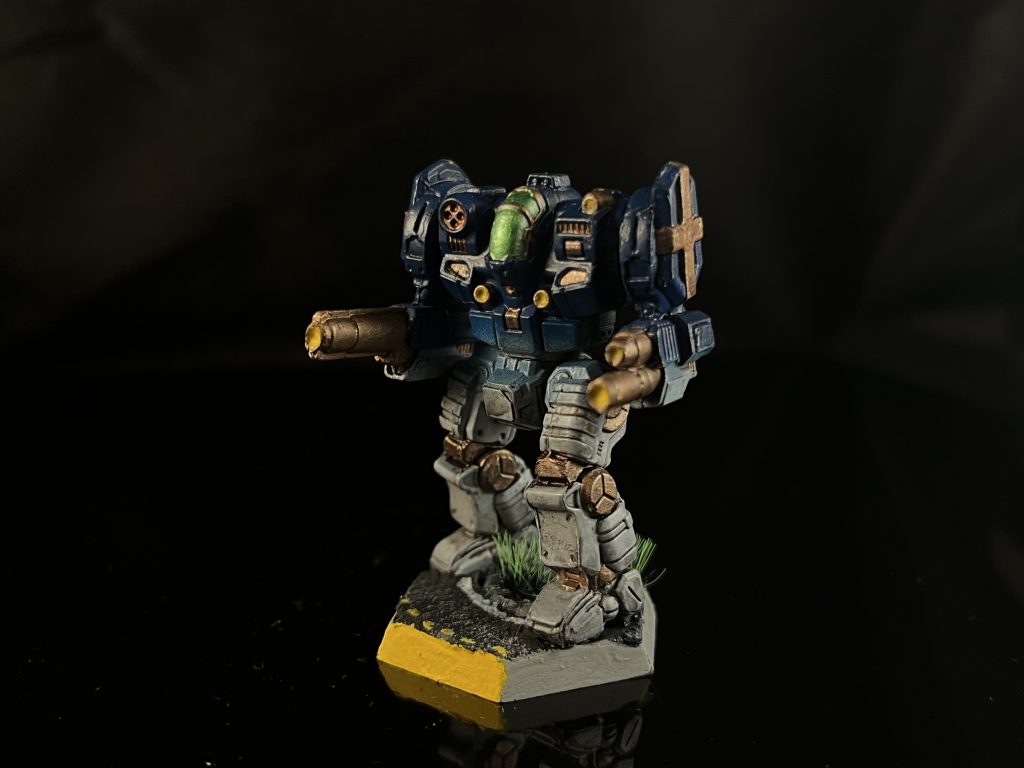
TLR2-OA
At 1,677 BV this is in the running for cheapest 4/6 85 ton mechs, competing with some early BattleMasters and longbows. It does this with a real simple weapon load – two large pulses, two medium pulses, and two MML 7s. The missiles are a little under-ammoed, but not by a lot. If you carry the default bin of LRMs and bin of SRMs you’ll likely be running out of SRMs by the end of the game, but I’d probably just carry two bins of SRMs and not worry about firing LRMs at all. This is just a little brick of a mech that’ll run up the board, cheap as hell, and be just a little bit too hard to deal with for the BV.
Jack’s Rating: A
Liberty’s Rating: A+. This is the GMGM special. If either of my Templars hit the table it’s this thing. I absolutely adore the OA as it makes a good fourth in my beloved 2xMAD-5T + NSR-9J lance I’m so fond of running. The OA is cheap enough to always have on hand and tough enough to always be willing to put it in the ‘good shots for the opponent’ spot to soak fire from the NSR or the MAD. Astoundingly cheap and very tough front liner that is happy to battle-caddy in your battlearmor and then beat on anything they see that needs attention.
TLR2-OB
This variant, I think, was designed for Solaris fights – it carries an ER PPC, six small x-pulse lasers, an ER small laser, a hatchet, a chain whip, and a supercharger. All the weapons are in the torsos, so nothing interferes with the melee weapons. The hatchet is OK – it’s a 17 damage hit on the full body table, which is enough to go internal in the torso of many medium and lighter heavy mechs, the chain whip in the other arm does less damage, but with more special rules. If it hits a leg, it has a chance to knock the opponent over. If it hits an arm, it can grapple the opponent to keep them in the same hex (with the Templar III also remaining in place). Mostly I’d say this isn’t great – I generally don’t want to sacrifice my movement to prevent my opponent from moving, but if you do happen to snag a fast light or medium with it you’ve got a good chance to remove something annoying from play. At 1,919 BV I don’t think this is worth either the added rules headache (chain whips are on all of 6 variants, so I doubt anyone at the table knows their rules offhand) or just the general combat effectiveness.
Jack’s Rating: C-
Liberty’s Rating: D+. It’s… a machine? I’m not sure why you’d do this in general play but I could see it being very funny at least!
TLR2-OC
Another Templar that does a bit of everything, the -OC carries a large re-engineered laser, pair of ER medium lasers, rotary AC/5, streak SRM 6, and an ER small laser. Once again, I want that small laser to go away so the CASE could’ve been CASE II. That said, at 1,993 BV this is fine. Not as effective as some of the other 2,000-ish BV variants, but it’s got reasonable heat sinking and decent damage output. It’ll once again be one of those mechs that aren’t quite high enough priority to kill, so it manages to put out a lot of damage over the course of a game.
Jack’s Rating: B
Liberty’s Rating: B+. RAC/5 MY BELOVED. This has the potential to be very funny, especially if the people in your local like the oddball armor so that you get all you can out of the Large RE Laser! Otherwise just drown people in big shells and keep on keepin’ on!
TLR2-OD
I would say this is based on the TLR1-OR, because that’s what would make sense, but the late intro date means that it’s presumably based off this variant. Running a clantech refit, it has a single ER PPC, LB 10-X AC, and four medium re-engineered lasers. I don’t like the heat curve on this as much as on the -OR, as while it’s well sunk for the short range bracket it’s vastly oversunk at long range. The ammo bins are also back in the torso instead of the nice CASE II protected arm, which adds some vulnerability that the light engine and HD gyro had taken away. All told, at 2,108 BV I think this isn’t quite as effective, and while it’s decent if you can spare the 300 BV you’ll be better served by the -OR.
Jack’s Rating: B+
Libertys’ Rating: B
TLR2-J ‘Arthur’
This is just a straight clantech refit of the TLR2-O, with two clan ER PPCs, two clan ER medium lasers, a clan streak SRM 6, and a clan ER small laser. It also somehow managed to swap the fixed CASE for CASE II and the cockpit out for a command console. I’m not really sure how, as that’s not a refit you should be able to do while remaining an omnimech, but that’s what the record sheet and alpha strike card say. It’s now 2,722 BV, which is entirely unsurprising for a clan assault mech with a pair of ER PPCs, the heat capacity to fire them, and a targeting computer.
As a bonus, assuming you’re playing with the advanced rules for the command console, you get two pilots in the mech. Assuming both have the same skill, it doesn’t increase your BV at all, gives you a redundant cockpit crit, and unless your first pilot takes too much damage and you need to swap them you’ve got +2 to initiative. For zero BV, that’s an awful lot of benefit.
Jack’s Rating: A
Liberty’s Rating: A-. This is very expensive for a command console ‘mech which is a bit worrying but the loadout is quite fun and that helps to make up for the price sins.
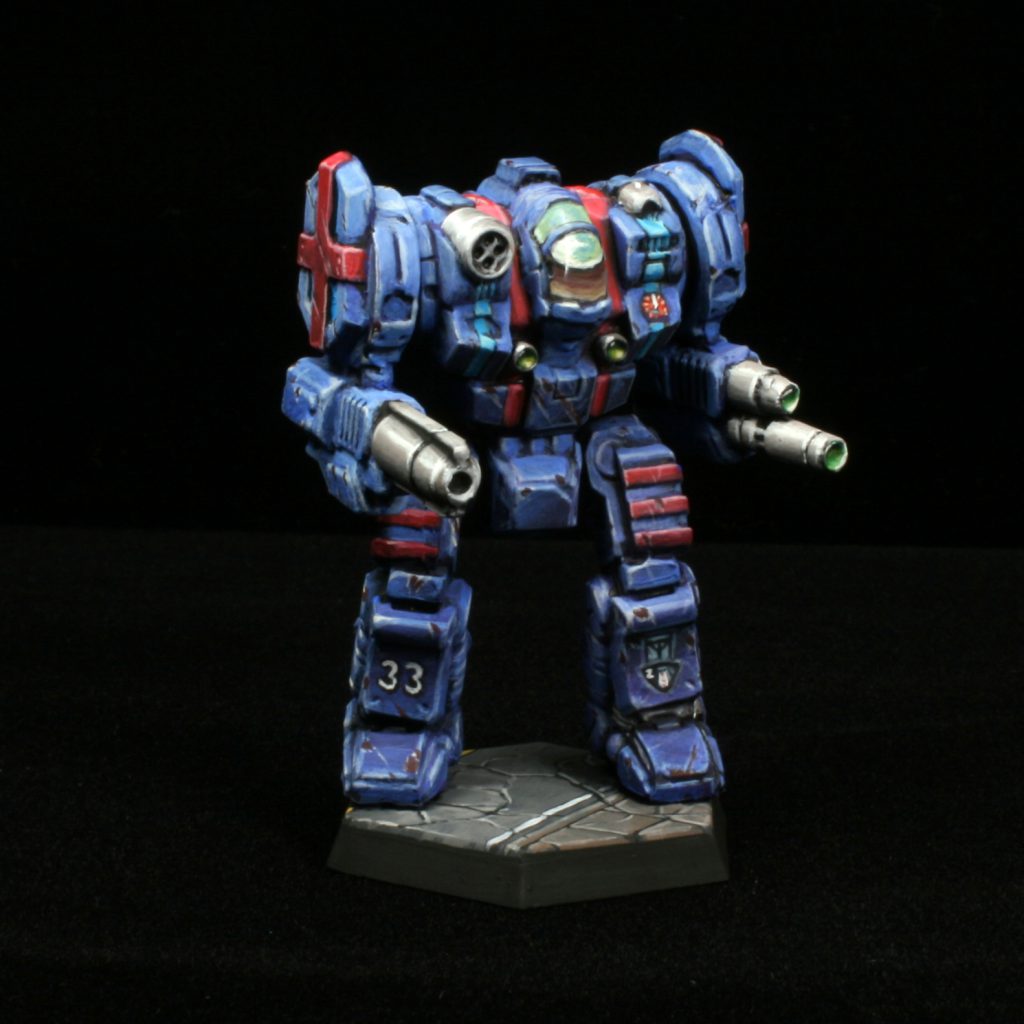
Conclusion
Fortunately for my desire to use this mini, the Templar and Templar III absolutely hold up to my love of them. While neither quite make it up to an A+/S grade, each of them have multiple variants that I’ll always be happy to run in a force. Outside of the perpetual headache that heavy duty gyros cause me, my only real complaint on the Templar III is the lack of CASE II. It would be a significant improvement at the cost of seven points of armor.
Have any questions or feedback? Drop us a note in the comments below or email us at contact@goonhammer.com. Want articles like this linked in your inbox every Monday morning? Sign up for our newsletter. And don’t forget that you can support us on Patreon for backer rewards like early video content, Administratum access, an ad-free experience on our website and more.

